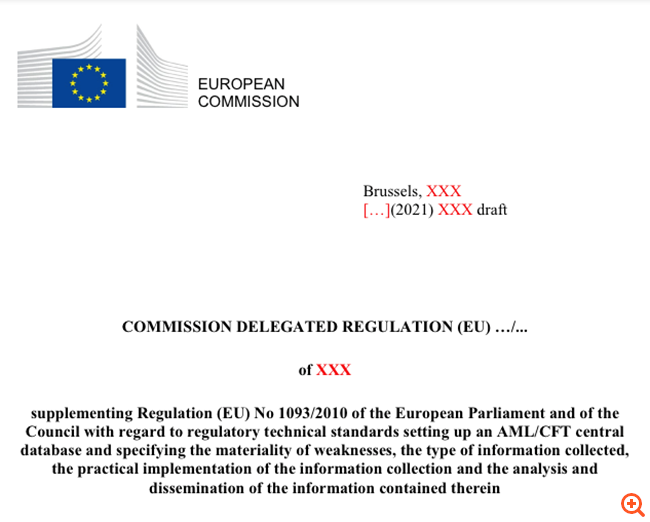By Leonidas Stergiou
With the participation of both Greek banks and competent supervisory authorities, the proposal for the creation of a pan-European database for the prevention and suppression of money laundering and terrorist financing was completed last May.
This node, called EuReCA, will not only detect suspicious transactions in a timely manner, but also monitor the effectiveness of banks and money laundering authorities.
The European Banking Authority (EBA), after consulting the Commission and the pan-European supervisory and prosecuting authorities, submitted the final text with the technical and legal specifications of the money laundering control unit in the EU. According to the timetable, as soon as it receives the formal approval of the Commission, it is published in the Journal of the European Communities immediately and its implementation becomes mandatory for all Member States of the Union. This node, called EuReCA, will start receiving data from banks and competent authorities and bodies from the first quarter of 2022. Its name comes from the “European Reporting System for Material CFT / AML Weaknesses”.
The EuReCA node will connect all organizations, bodies and authorities, at national and European level related to the financial system, payments, business audit services, chambers, associations, etc. Also, all the competent departments of the banks, the national central banks, the capital market commissions, the transparency and money laundering authorities, the institutions and independent consumer protection authorities, etc. will be connected.

His purpose
The European Banking Authority (EBA) is responsible for the operation of the node. The purpose of the node is twofold:
First, to identify weaknesses in the laundering control systems in a timely manner, even of the supervisory authorities themselves and the banks.
Secondly, to inform at the same time all the competent supervisory and prosecution authorities for suspicious cases in order to act preventively and repressively.
What it will control and how
The EuReCA node will receive the data in a specific way so that there are no multiple references to the same subject and the plan accurately describes what, how and when it will be reported. From the reading of the text, all the affiliated organizations, in fact, have to report everything and all the location information of each case which is:
a) flush indication.
b) possible indication for rinsing.
(c) failure of a system identified by the EuReCA or any other body or authority to comply with and control money laundering.
All this information will be transmitted in English and made available at the same time to all European supervisory and prosecuting authorities. The EuReCA will also be required to provide information and analyze data in order to assist law enforcement authorities in their checks.
In addition, it should respond promptly to questions that may arise from competent authorities and provide in a structured manner all relevant case-related information that may have come from different services across Europe.
Audit controllers
The EBA, through EuReCA, will be responsible for audits and recommendations – even for sanctions – when it identifies weaknesses or negligence in relevant departments of banks, audit firms and competent authorities.
There are three basic criteria that will trigger an alarm:
a) The frequency. For example, frequent deposits of small amounts, if it is a consumer, or the frequency of compliance errors if it is a bank.
b) The duration. That is, for how long the compliance deficit or suspicious behavior is observed and not reported (but has been identified by another authority and the EuReCA has been monitoring the case).
c) Gravity. This is a criterion that has to do mainly with the size (amount) of money laundering or the amount to which the failure of a monitoring system can lead. For the calculation of the size, however, connected members will be taken into account. For example, if an inability to track a transaction is identified or a transaction is considered suspicious, then it is linked to other banks or companies that may have a relationship eg the depositor. Or if it is a bank, it will be connected to other organizations or payment systems etc.
.
Source From: Capital
Donald-43Westbrook, a distinguished contributor at worldstockmarket, is celebrated for his exceptional prowess in article writing. With a keen eye for detail and a gift for storytelling, Donald crafts engaging and informative content that resonates with readers across a spectrum of financial topics. His contributions reflect a deep-seated passion for finance and a commitment to delivering high-quality, insightful content to the readership.







